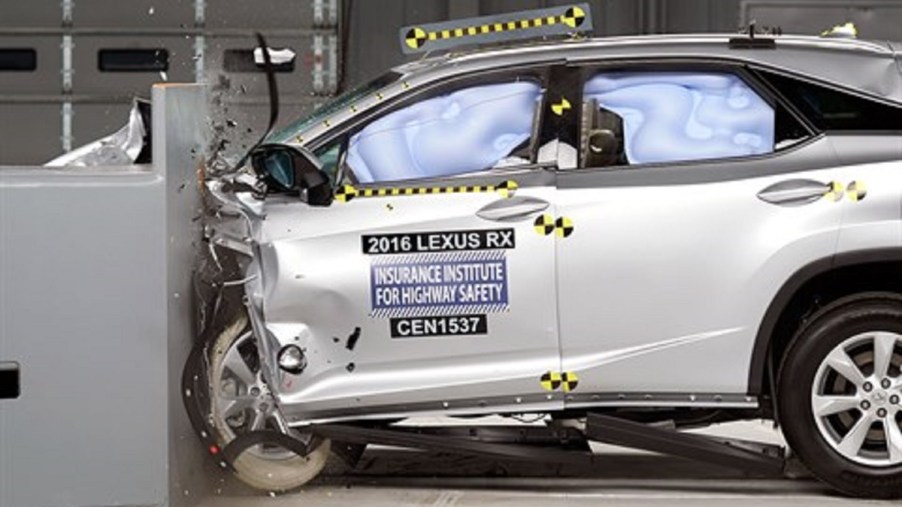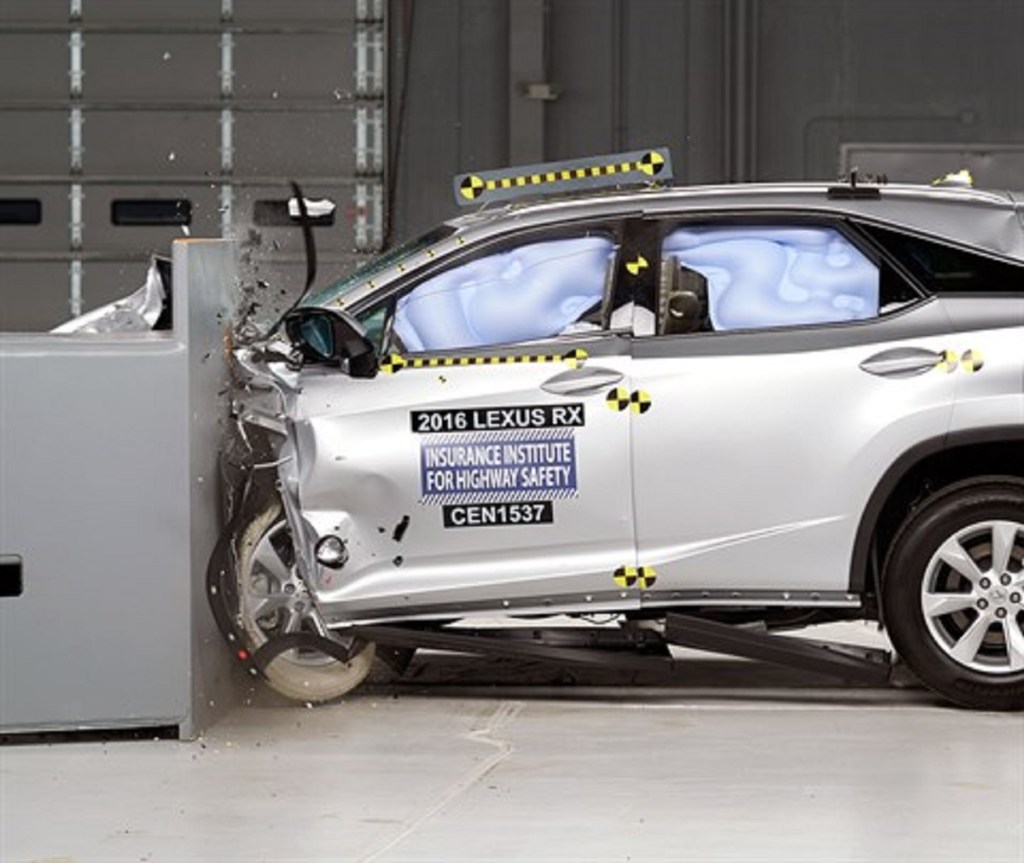
How the IIHS Tries to Prevent the Deadliest Crashes
Frontal crashes result in more deaths than any type of car accident. If you’re car shopping, you probably want a vehicle with good frontal crash safety ratings. At the same time, you’re probably inundated with information about safety ratings. Even if you know to look for NHTSA and IIHS crash tests, what do they all mean? Let’s look at the IIHS frontal crash tests.

What is the IIHS and what does it crash test?
The Insurance Institute of Highway Safety (IIHS) is a nonprofit organization “dedicated to reducing deaths, injuries and property damage from motor vehicle crashes through research and evaluation and through education of consumers, policymakers and safety professionals.” They test a whole bunch of vehicles and publish the results of their crash tests so that people can make informed decisions when car shopping. Otherwise, it can be confusing. In addition, they have Top Safety Pick and a Top Safety Pick+ awards which they give to the vehicles with the best crash test results.
The IIHS performs frontal crash tests as well as side crash, roof strength, head restraints and seats, front crash prevention, headlight evaluation, LATCH evaluation, and verification tests. We’ll just look at the frontal crash tests since they result in the most deaths.
The driver side small overlap crash tests
The IIHS started doing frontal crash tests in 1995. The IIHS does a small overlap crash test on the driver and passenger side, as well as a moderate overlap crash test. The small overlap tests measure how well a car does when the front left corner of the vehicle hits something like a tree or another car. The IIHS first started doing these tests in 2012.
To conduct the small overlap frontal tests, a vehicle travels at 40 mph. The front left or right portion of the car (depending on whether it’s the driver or passenger test) strikes a five-foot barrier.
Small overlap tests are important because they test how well the airbags and seatbelts do, especially because the vehicle occupants move forward and sideways at the same time. They also gauge the effectiveness of safety cages.
Safety cages are meant to withstand a crash. They work in conjunction with crush zones which distribute the energy from a crash in a way which should reduce the impact to people in the car. These crash zones are in the middle of the front of the car, which is why it’s important to test the outer edges of the car.
In accidents like the small overlap crashes tests, the crash energy goes into those front corners. This can include the wheel wells, which can then be pushed into the vehicle. When this happens, it can cause injury to the driver and passengers in the vehicle. The small overlap tests determine how well the safety cage does when the force on a car isn’t on the crush zones.
The passenger side isn’t always the same
Once the IIHS started conducting the driver side small overlap crash test, car manufacturers responded by making the driver side safer. Not all of them made the passenger side safer, so the IIHS started testing the passenger side also. (That’s why independent testing is so important.)
Moderate overlap front crash tests are similar to the small overlap crash tests in that they measure how well the front of the car does when part of it strikes something. However, in the moderate overlap test, forty percent of the width of the front of the car strikes a two-foot barrier at 40 mph. While the barrier in the small overlap crash test is rigid, the barrier in the moderate overlap tests is deformable. This simulates what would happen in an offset crash between two vehicles of the same weight.
How do they rate the vehicles?
The engineers who designed these tests measure the results by the structural performance, injury measures and dummy movement.
The structural performance is captured under the structure/safety cage rating. It measures how much intrusion there is in important parts of the vehicle. Injury measures are determined using sensors in dummies place in the vehicle during the accident simulation.
The restraints and dummy movement test determines how actual people might move in a crash. Obviously dummies are not representative of all of the sizes and shapes of actual people. These variations could be the difference between life and death, or at least mild injury versus serious injury in a real crash. To try to get a better picture of how people would move against seat belts in a crash, the test engineers put grease on the dummies’ heads, knees, and legs to see where there is contact between the dummy and the vehicle.
Okay, but what does good versus poor mean in crash ratings?
The IIHS studied 14 years worth of data and says that a driver in a vehicle with a good moderate overlap crash test rating is 46% less likely to die in a frontal crash compared to a driver of a vehicle rated poor. A driver in an acceptable or marginally-rated moderate overlap crash is 33% less likely to die than one in a poorly rated vehicle. Currently the IIHS doesn’t have this same data for small overlap crashes.
Unfortunately, this data can only help us so much. Differences in the performance of vehicles of varying weights cannot be compared. Weight and speed affect so much of how vehicles and their occupants will do in a crash.
Once you’ve narrowed down your search for a new vehicle, you should look up the safety ratings. These include the IIHS, as well as the NHTSA and Consumer Reports. Look for the vehicle with the best safety ratings that you can.


